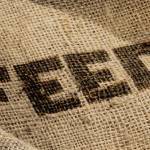How Is Pelleted Horse Feed Manufactured?

Feeds and feed management for horses have seen major changes over the years. A century ago, most horses ate hay and oats or corn. Grain might be harvested from the farmer’s own land, or corn and oats might be bought in large bags that usually weighed around a hundred pounds (45 kg). Today’s horses still consume grass and hay, but horse owners can now choose from a variety of concentrate forms.
Textured (sweet) feeds were some of the first prepared horse feeds to hit the market. Owners liked the feeds because it was easy to see what was in them. Corn, oats, and molasses were clearly visible in the mix, and few if any horses refused the sweet flavor. When pelleted horse feeds made an appearance, there was a wave of suspicion about what the product actually contained. Each tan-colored pellet had a smooth, slightly grainy appearance. Unsubstantiated dark rumors hinted that feed mills swept up whatever was on the floor at the end of the day and compressed this refuse into pellets to be sold to unsuspecting clients. But horses happily gobbled the pellets, which slowly gained acceptance.
So what is really in pelleted horse feed? Is it better for horses, or worse, or about the same as sweet feed? Are there any advantages to feeding this product that looks so different from traditional grains?
Pelleted horse feed products begin with essentially the same ingredients that go into textured feed. The grains are dried and finely ground, breaking up the seed coatings and kernels. Like cracking or crimping or rolling of grains, this process exposes more surface area, a benefit for horses that don’t chew well. The grains are thoroughly mixed with other ingredients such as vitamins, minerals, and salt and are then sent to the conditioner, a chamber in which steam is introduced to add moisture and heat. The hot, moist mash is then fed into the pelleting mill where it is forced through dies. The dies can be adjusted to process various mash formulations and produce pellets of different diameters.
After passing through the pelleting mill, the newly formed pellets must be cooled and dried. This is accomplished either by horizontal coolers, where the pellets move along in shallow layers, or by a counter-flow system where dry air is forced up through a column of pellets. After they reach the desired temperature and moisture level, the pellets are bagged and sealed, usually in heavy paper sacks that are filled to weigh about 40 to 50 pounds (18 to 23 kg).
With the same ingredients, pelleted or textured feeds offer horses very similar nutritional benefits. Pelleted feeds have some advantages including easier handling in cold weather, less tendency to mold in hot weather, and better digestibility because the grains are slightly cooked by the steam. Because they are not sticky, the pellets don’t leave as much residue in bins and stall feeders.
Owners have quite a variety of feed forms and formulations available in any feed store. To aid in choosing the right product for each horse, feeding instructions are included with each type of product. Feeds for idle, working, growing, and retired horses can be found, each with directions as to how much to give a horse to meet its nutrient requirements. To be sure of selecting the right type of feed for a particular class of horses, owners can check with an equine nutritionist for specific recommendations. It’s likely that the horses will be well-nourished and content with whatever textured or pelleted feed is chosen.








